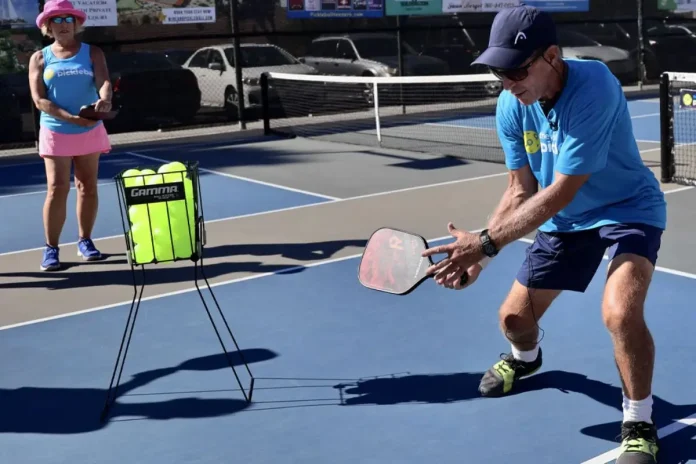Pickleball Attack Strategies Coach Tips: Pickleball coach emphasized how smart speed-ups and strong positioning help win at the kitchen line. The video session, shared in 2025, focused on how players can build pressure, test their opponent’s reactions, and stay ready to counter quickly. This strategy helps gain control during fast exchanges.
Attacking Early and Often
The coach explained that attacking early can unsettle opponents. “I want the player in front to be a little bit afraid of me attacking them,” he said. Using a mix of attacks to the line, hip, and shoulder forces the opponent to stay alert.
He added, “Part of it is sending a message I’m not afraid of you Mike… you want to send a message that I’m not afraid of the player in front.” By speeding up the game, players learn about the opponent’s reaction time and shot control. He said, “Even if you beat me, I’m learning about how good his hands are.”
Positioning Close and Staying Ready
Standing closer to the kitchen line reduces space for the opponent. The coach explained, “If you can lean into the kitchen line here and you cut the kitchen in half… now you can take a ball out the air and rush me.” Good players also know when to attack from lower positions but stay cautious.
He added, “Your attacking window will grow as your skill level gets higher… however, when the players in front of you get better, you’ve got to be more careful on a low speed-up.”
Three Keys to Countering
The coach highlighted three tips: hold a high paddle position, move quickly to the correct zone, and keep counterattacks short. After every dink, the paddle should stay up: “You want it where you’re not allowing your paddle to drop throughout the rally.”
He split the court into three zones and stressed moving to match the dink. “So some of the problems becoming where you’re dinking in zone three but staying in zone two and then I flick it down the line and you’re late.”
He added, “You can’t lunge at the speed of the ball… if you stay in zone two and I speed up down the middle, you’re trying to step and block at the same time which is tough.”
Smaller Counters, Better Reactions
Trying to hit big counters can backfire if the ball comes back faster. “I speed up, you counter, I recounter… can you get my recounter? That’s the question,” he said. To keep up, players must stay in the fight for at least four-ball rallies.
“Most players want to put the ball away in the first counter,” he explained. But being too aggressive makes them miss the next ball. “Stay small, stay compact and then you’re waiting for that ball… before you go for the kill.”
Staying in Control and Ready
The coach advised players to keep the paddle in front, where they can see and react better. He said, “If you can keep that paddle in front and connect here, you got a better vision.”
By staying calm and not rushing to finish points, players gain control of the rally. “If I try and put the ball away too aggressively on the first ball, I’m not ready for the next ball,” he added.
News in Brief: Pickleball Attack Strategies Coach Tips
Pickleball coach shared how early speed-ups, smart movement, and short counters help players control rallies. Clear paddle position and footwork are key to staying ready.
ALSO READ: Master Pickleball Attacks: Mark Price Reveals the Secret to Power and Precision


